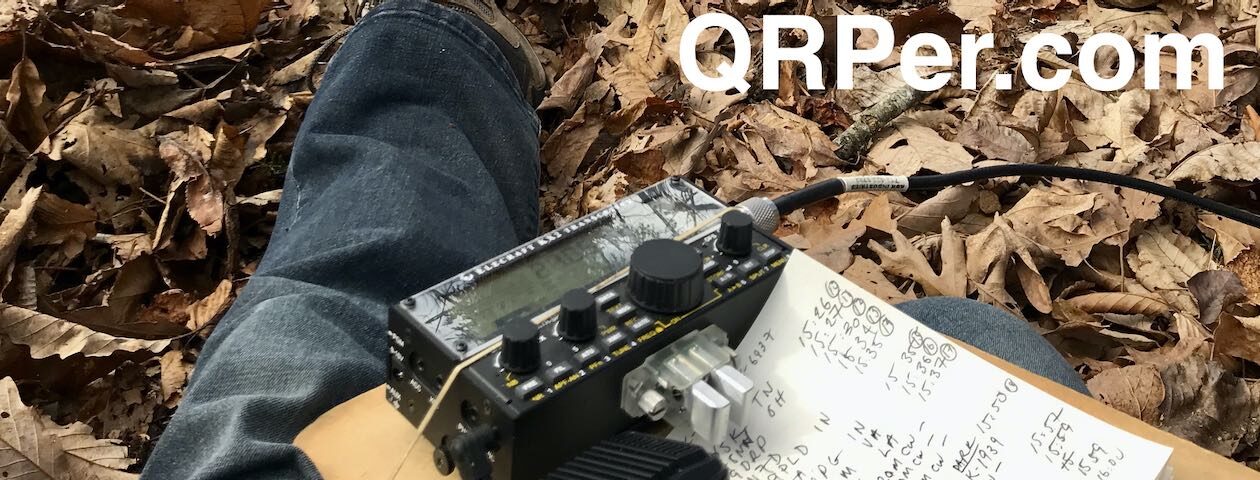When Eric (WD8RIF) and I hatched our plan to do a mini POTA expedition in West Virginia, there was one site I wanted to activate more than any other: New River Gorge National Park.
More specifically, I wanted to activate the park by way of the scenic one-way road that starts near the New River Gorge Visitor’s Center and descends down to the Tunney Hunsaker Bridge (the “old” New River bridge).
 Why? Because in December 2016 during the National Parks On The Air (NPOTA) program, I passed through West Virginia and activated some very rare parks on my way to a multi-day park run with Eric in Ohio. I fully intended to activate the New River at this very spot (underneath the “new” New River Bridge) after hearing how amazing the drive was from Eric.
Why? Because in December 2016 during the National Parks On The Air (NPOTA) program, I passed through West Virginia and activated some very rare parks on my way to a multi-day park run with Eric in Ohio. I fully intended to activate the New River at this very spot (underneath the “new” New River Bridge) after hearing how amazing the drive was from Eric.
Unfortunately, I happened to time my trip through West Virginia on a day when we received about an inch of snow. Even though (at the time) I was driving a Toyota minivan with nearly bald tires, the snow didn’t pose a problem at any other site, save this one. I had to change my plans and activate the New River in a spot where the access had less elevation change on a narrow snow-covered road. With my Subaru, this wouldn’t have been an obstacle in the slightest.
I was looking forward to going back to this site and was very pleased to see that Eric and his son, Miles, had already planned this trip in the draft itinerary!
New River Gorge National Park (K-0696)
On the morning of May 20, 2022, Eric, Miles, Theo the dog, and I left our campsite at Babcock State Forest and made our way to the New River Gorge Visitor’s center next to the New River Bridge.
If you’re ever in this area, I’d highly recommend checking out this visitor’s center as it has some well-designed exhibits detailing the impressive engineering that went into the construction of the New River Gorge Bridge.
There are also some fantastic views from the visitor’s center and from its short gorge overlook trail.
 From the trail overlook at the visitor’s center we could see the spot where we planned to activate near the Tunney Hunsaker Bridge deep in the gorge (see photo above).
From the trail overlook at the visitor’s center we could see the spot where we planned to activate near the Tunney Hunsaker Bridge deep in the gorge (see photo above).

The drive into the gorge was quite scenic with a number of spots to park and take in the enormity of the New River bridge. At the bottom of the gorge, the view was pretty spectacular as well!
At the bottom of the gorge, the view was pretty spectacular as well!

Tufteln 9:1 EFRW (End-Fed Random Wire) antenna
I mentioned in a previous post that long-time QRPer.com reader and supporter, Joshua (KO4AWH), runs an Etsy store with a wide range of products primarily designed for field operators.
Besides the Elecraft T1 protection case I mentioned previously, he also sent a couple of his QRP field antennas for testing and evaluation (to be clear: free of charge). Thanks, Joshua!
I decided to break in his EFRW QRP Antenna Long Wire at New River Gorge. Since Eric and I would be operating pretty close to one another, I wanted to use a random wire antenna that would give me a bit of frequency agility to hop around and avoid harmonically-related bands Eric might be using. This Tufteln antenna fit the bill! Continue reading New River Gorge: Pairing the Tufteln 9:1 Random Wire with the Elecraft KX2





































